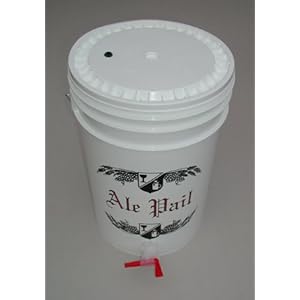On a recent thread I posted to, I said I used a 5 gal paint bucket I purchased at home depot, to brine in. Well, I got a very well meaning responce from another member that this type of plastic was not so good and I should be using a food grade container. This worried me a little (I sure don't want to be doing anything that could harm my family) so I did some checking...my bucket is "HDPE type 2", this is used in many food apps. Well that made me feel a little better. I found after reading many different articles that there are no known health risks for types 1, 2, 4, & 5....now for 3, 6, & 7 that's a different story. I also found that heating "ANY" plastic will cause it to leach, microwave, hot foods etc. Well, brine + cold = good, right? I'm feeling even better.
Now for the not so good part, I started going through the house like a mad man looking at the bottom of all my food containers, water bottles etc. and low and behold there it was, a type 7 on a water jug and of all things....my coleman cooler. hmmm I store hot food in there after smoking.... is that safe?... I don't know:doh:.
I picked this article to post because it was a quick easy read.
http://hubpages.com/hub/Safe-Plastics-Vs-Unsafe-Plastics
Now for the not so good part, I started going through the house like a mad man looking at the bottom of all my food containers, water bottles etc. and low and behold there it was, a type 7 on a water jug and of all things....my coleman cooler. hmmm I store hot food in there after smoking.... is that safe?... I don't know:doh:.
I picked this article to post because it was a quick easy read.
http://hubpages.com/hub/Safe-Plastics-Vs-Unsafe-Plastics

